The Loggetta di Sansovino under the bell tower in the Piazza San Marco was where the tribunal of the Procuratori di San Marco met during the sessions of the Maggior Consiglio.
Source: Habiti d’huomeni et donne venetiane, published by Giacomo Franco, c. 1610, in Venice.
Loggietta
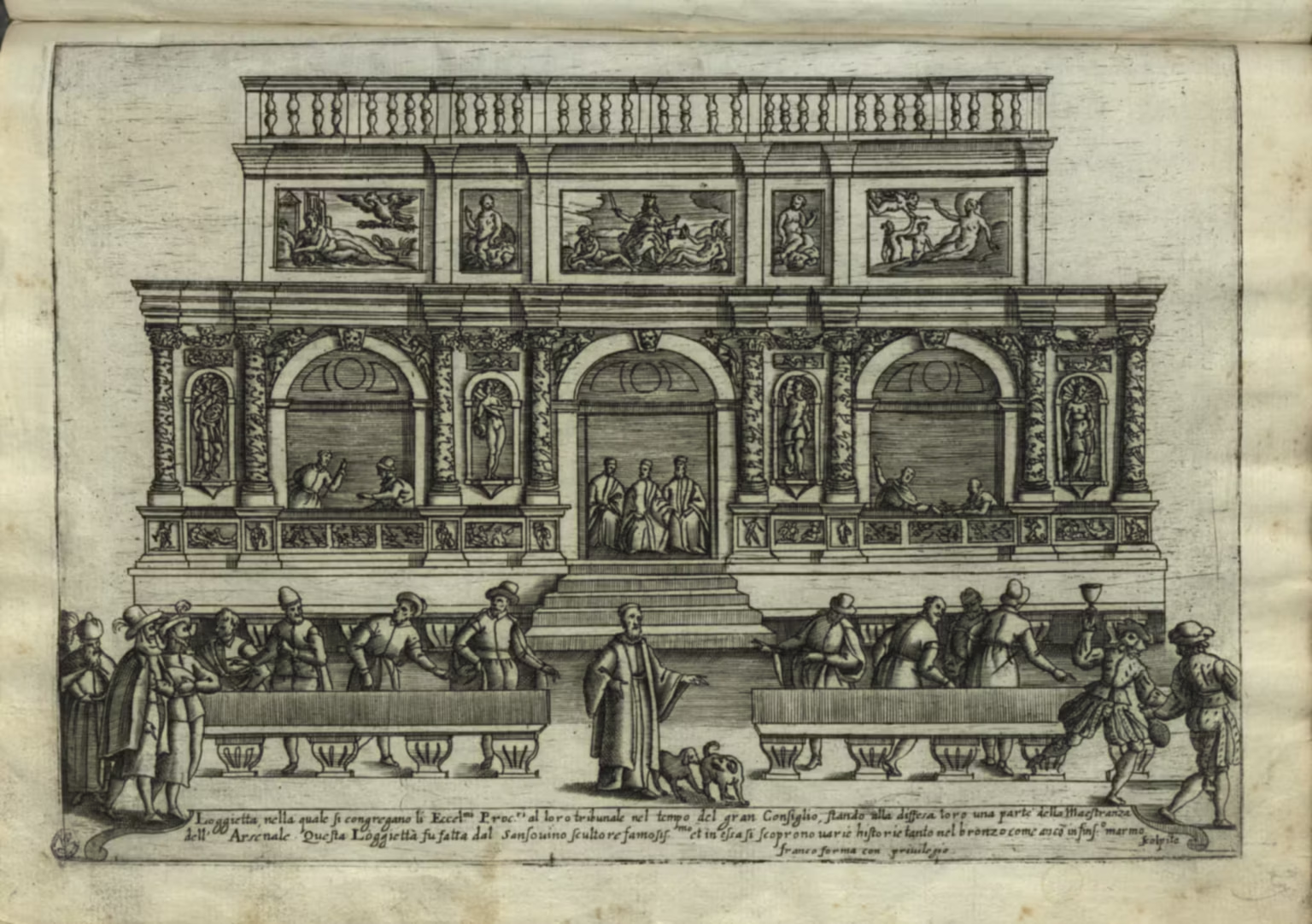
Caption
Loggietta nella quale si congregano li Eccellentissimi Procuratori al loro tribunale nel tempo del gran Consiglio, stando alla diffesa loro una parte della Maestranza dell’Arsenale. Questa Loggietta fu fatta dal Sansovino scultore famosissimo et in essa si scoprono varie historie tanto nel bronzo come anco in finissimo marmo scolpite.
Translation
The loggia in which the Most Excellent Procurators gather in their tribunal during the meetings of the great Council, being assigned for their protection a part of the Masters of the Arsenale. This loggia was made by Sansovino most famous sculptor, and in it, one finds various stories both in bronze as in the most fine sculpted marble.
Other texts
Franco forma con privilegio.
Location
The Loggia is as the foot of the bell tower in Piazza San Marco.
It was designed by Jacopo Tatti or Sansovino, who was the official architect of the Republic of Venice from 1529 to his death in 1570. The construction took place over the years 1537–1549.
From 1569, it served as the tribunal for the Procuratori di San Marco. They were (among much else) responsible for security in the square when the Maggior Consiglio was in session.
The arsenalotti — the masters or the guardians of the Arsenale — assisted the Procuratori di San Marco with this task.
The Loggia was destroyed in the collapse of the bell tower in 1902, and reconstructed along with the tower in 1912, re-utilising as much as possible of the original materials.
Events
The Loggia is depicted with the Procuratori and the arsenalotti in and around the loggia, during a session of the Maggior Consiglio.
The three procuratori are presiding in the central doorway, while arsenalotti occupy the side arches and the area in front, inside the balustrade. An arsenalotto with two dogs control the entrance.
Outside the balustrade, three pairs of persons illustrate some of the ‘dangers’ the procuratori with the help of the arsenalotti had to keep in check.
To the far left, two Turks wearing turbans.
Immediately in front of them, two elegant men wearing masks. If the Maggior Consiglio was in session at this time, they cannot be nobles, as participation in the sessions were obligatory, so it is probably a reference to the Venetian carnival, when citizens and commoners were allowed to mask too.
On the extreme right, two well-dressed, but clearly drunk, men are walking away, one raising a chalice towards the arsenalotto in the middle, the other with a flask of wine in his hand.
A similar scene of the Procuratori di San Marco in the square during a meeting of the Maggior Consiglio, is Il Gran Teatro di Venezia — plate 1 — La Piazza di S. Marco.
Other versions
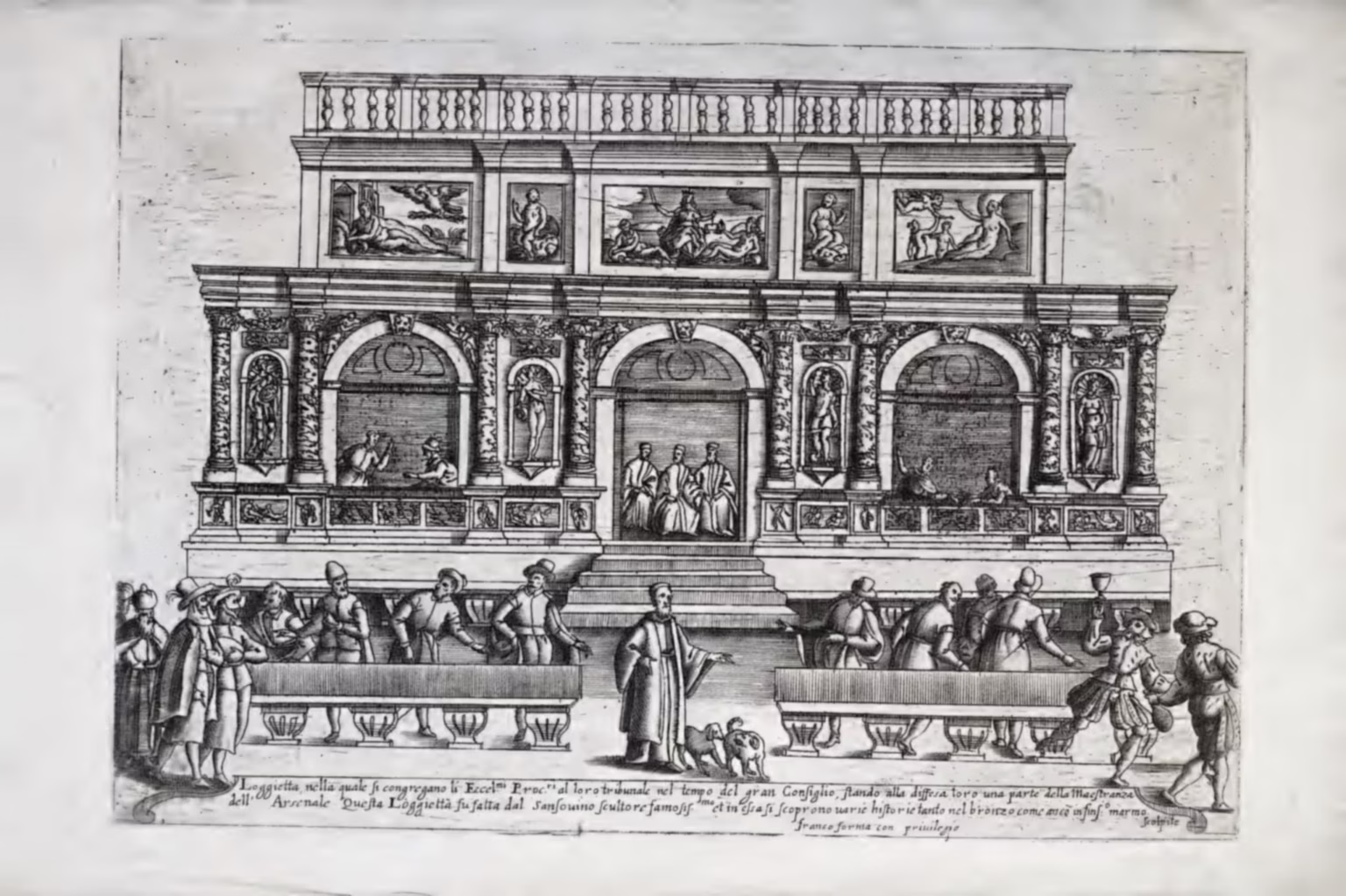
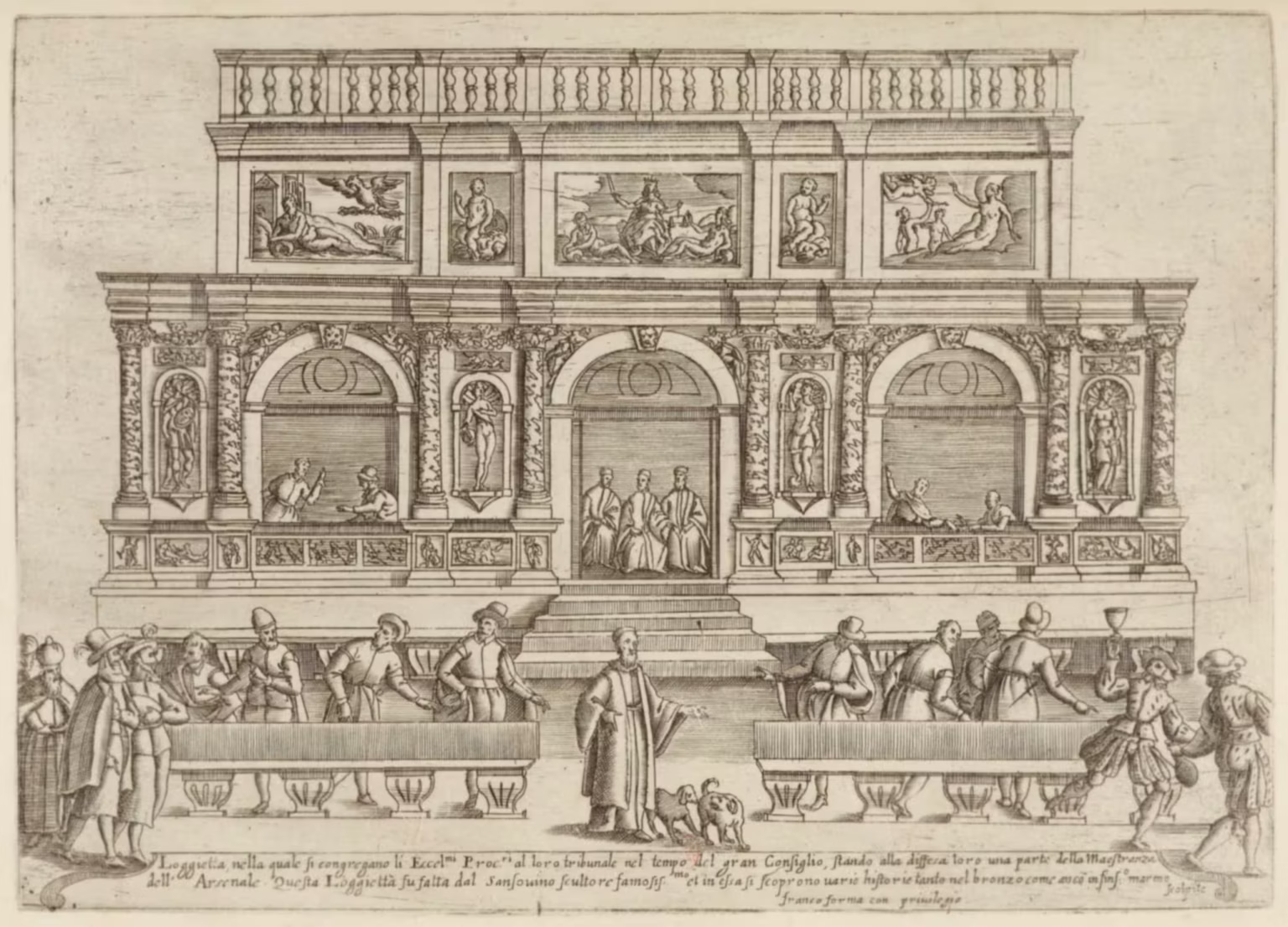

Related images
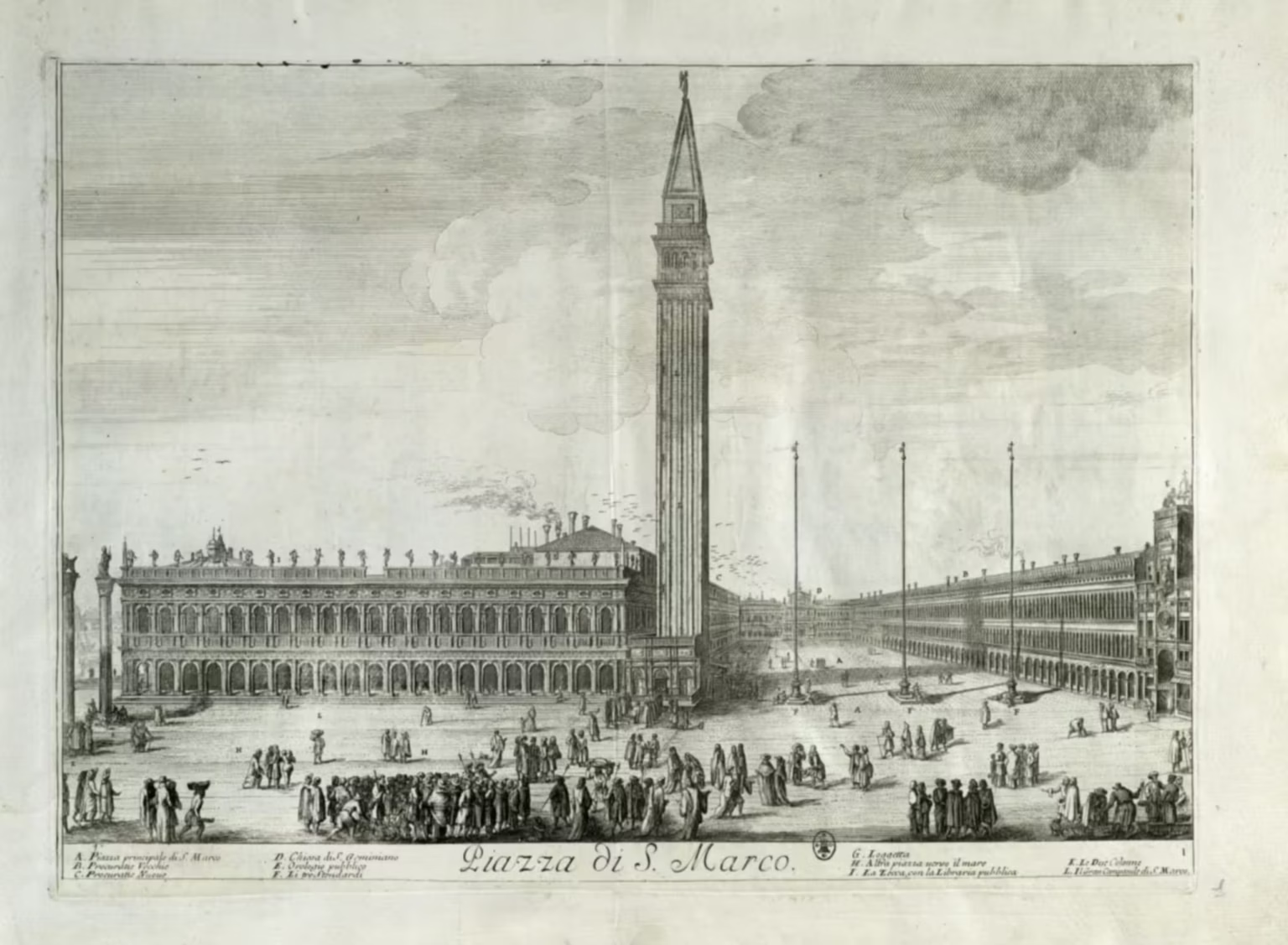
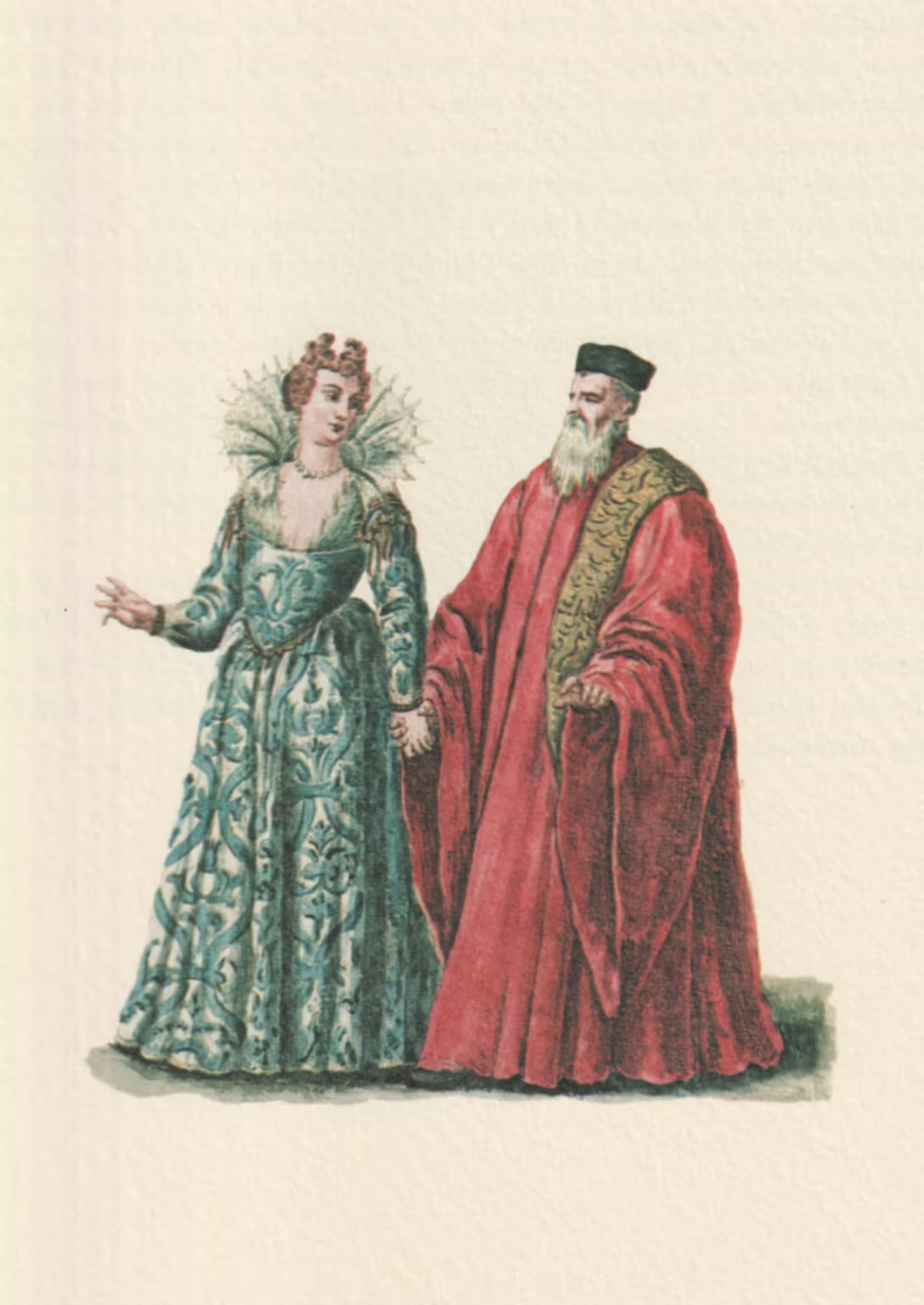
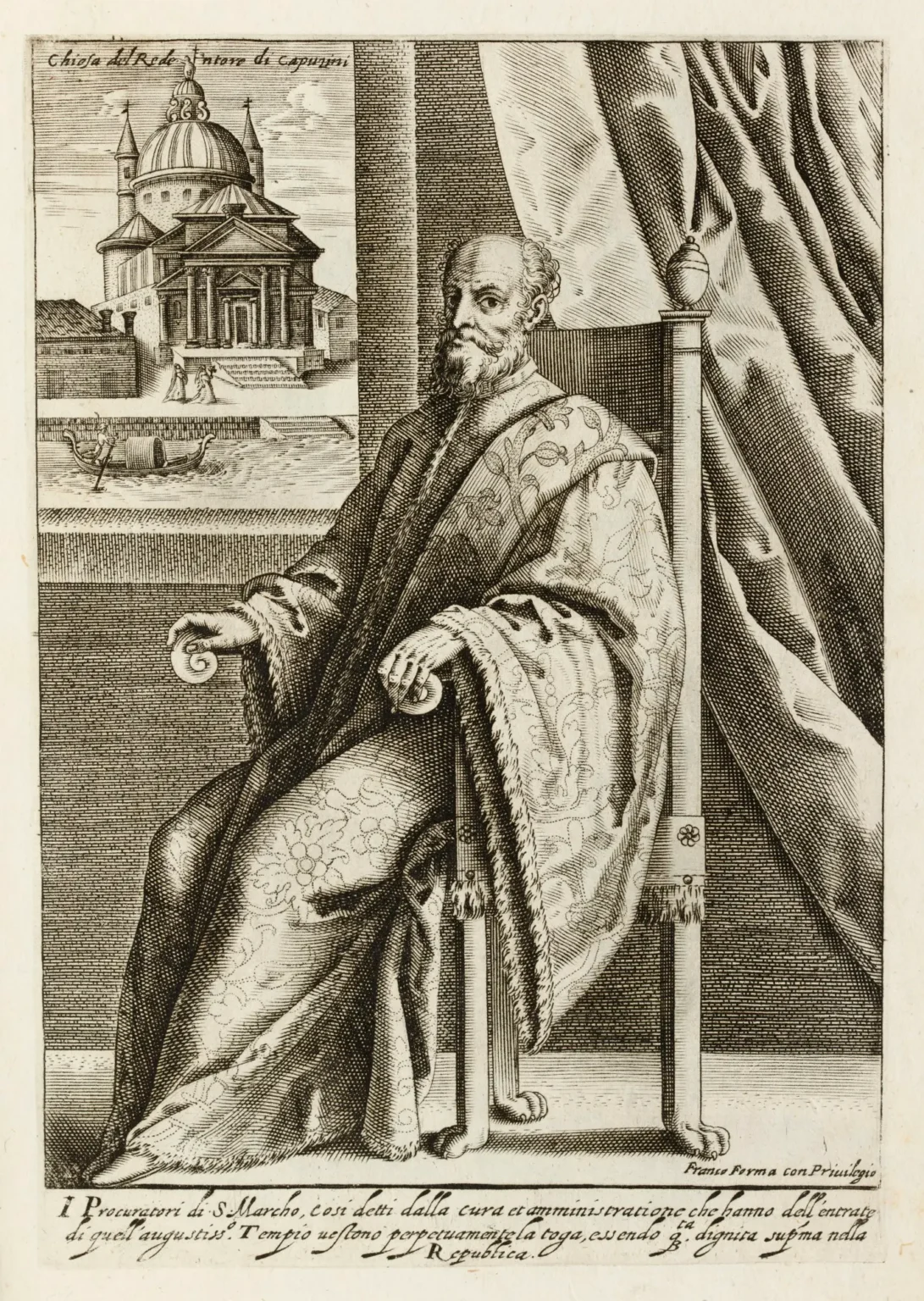
- Il Gran Teatro di Venezia — plate 1 — La Piazza di S. Marco
- Procuratore, e Cavaliere — Procurator and Cavalier — Grevembroch 1-18
- I Procuratori di S. Marcho — Habiti d’huomeni et donne venetiane — 3
Related articles
Sources
- Procuratore di S. Marco — ASV Indice
- Procuratori di S. Marco — Dizionario
- Procurator di san Marco — Lessico Veneto
Bibliography
- Da Mosto, Andrea. L'Archivio di Stato di Venezia : indice generale, storico, descrittivo ed analitico in Bibliothèque des Annales Institutorum, 5. Roma : Biblioteca d'arte, 1937. [more]
- Franco, Giacomo. Habiti d'huomeni et donne venetiane con la processione della ser.ma signoria et altri particolari cioe trionfi, feste et cerimonie publiche della nobilissima citta di Venetia. Giacomo Franco forma in Frezzaria all'insegna del sole, 1610. [more] 🔗
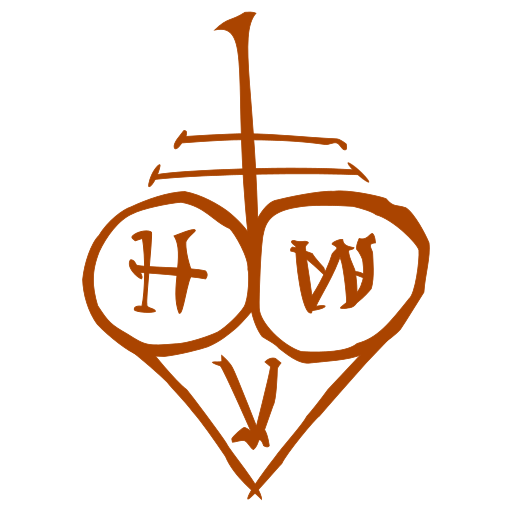
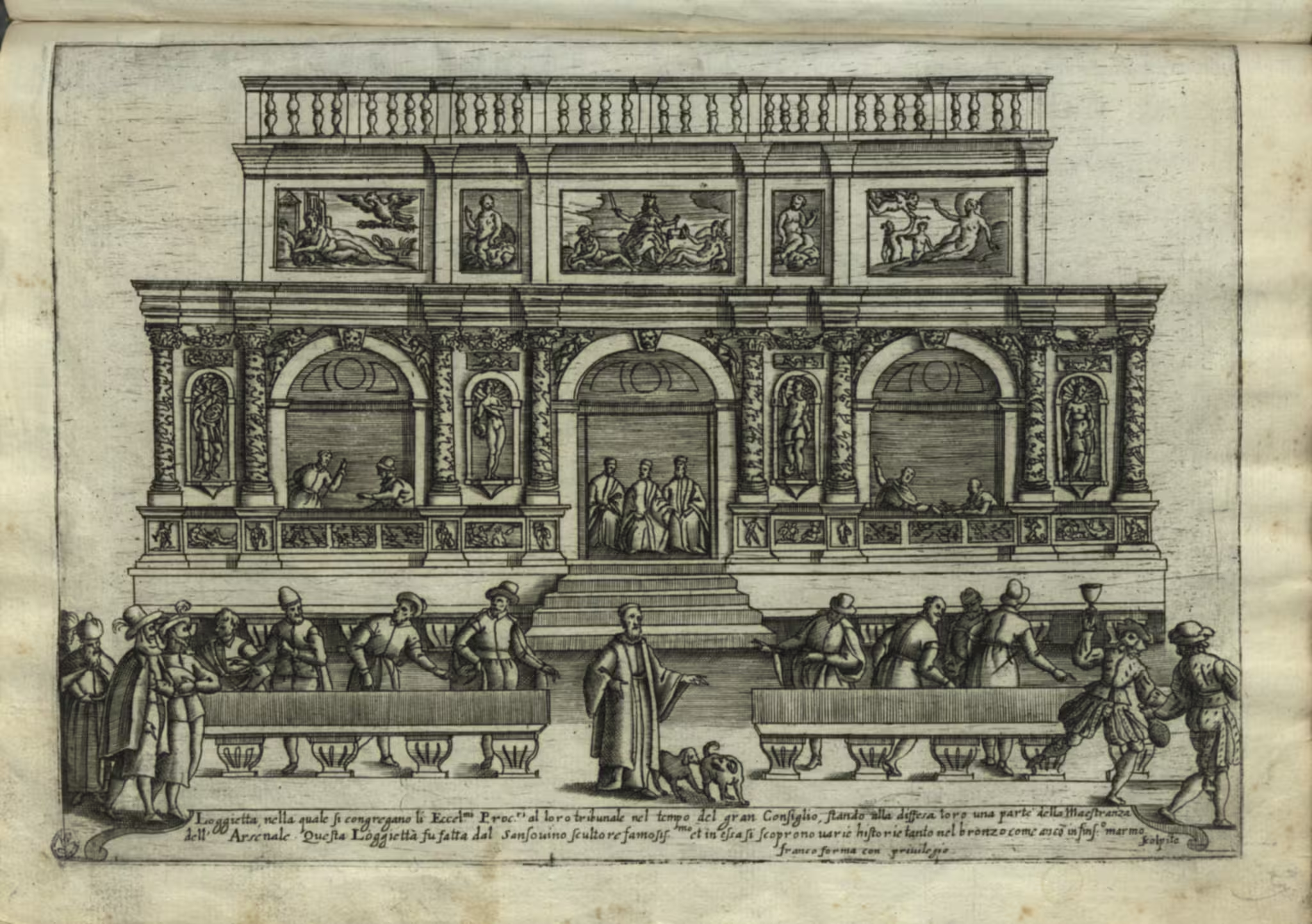
Leave a Reply